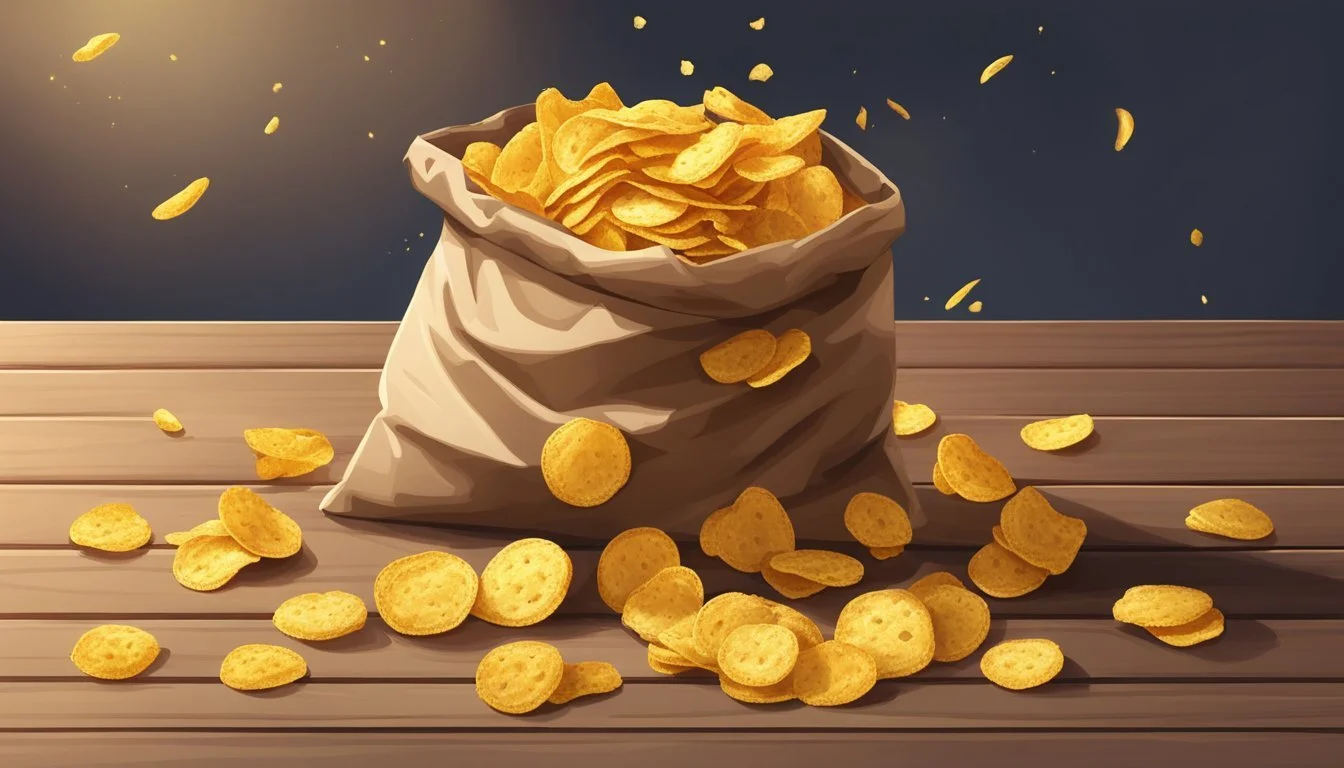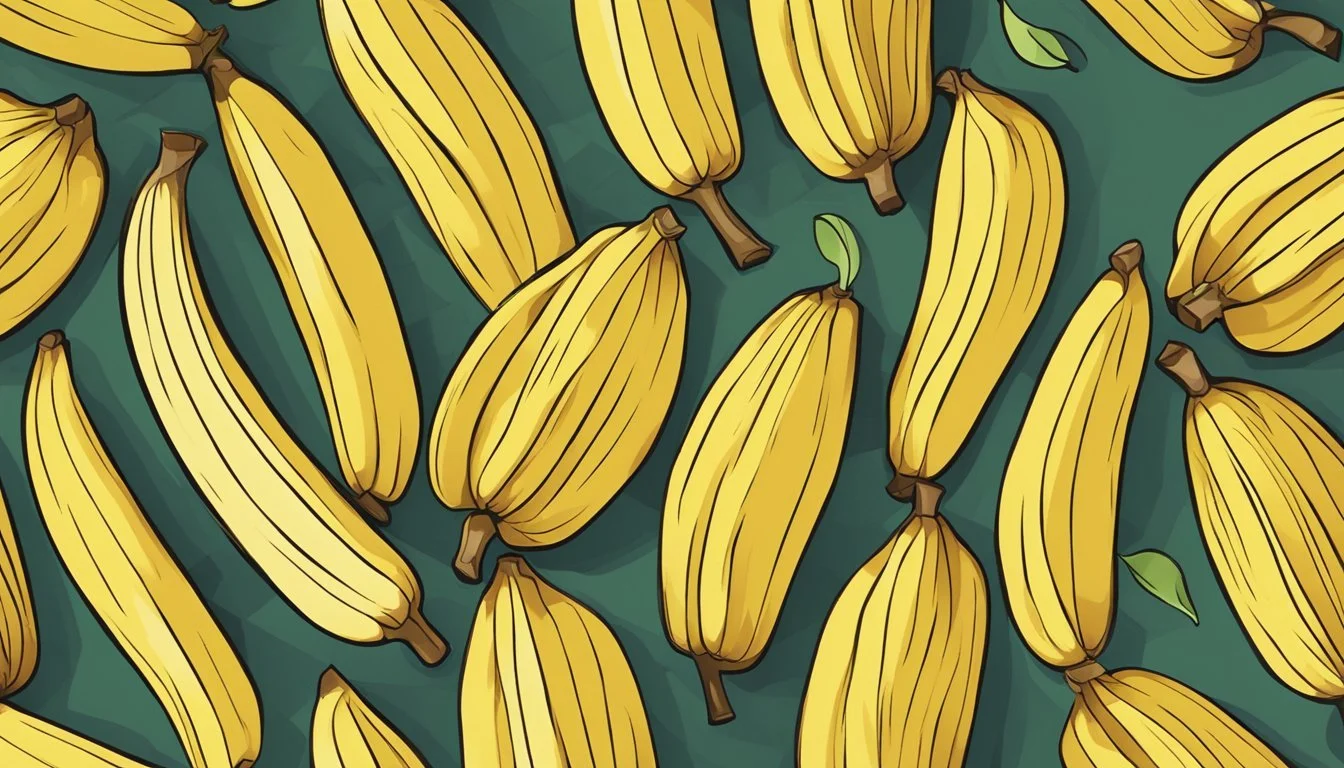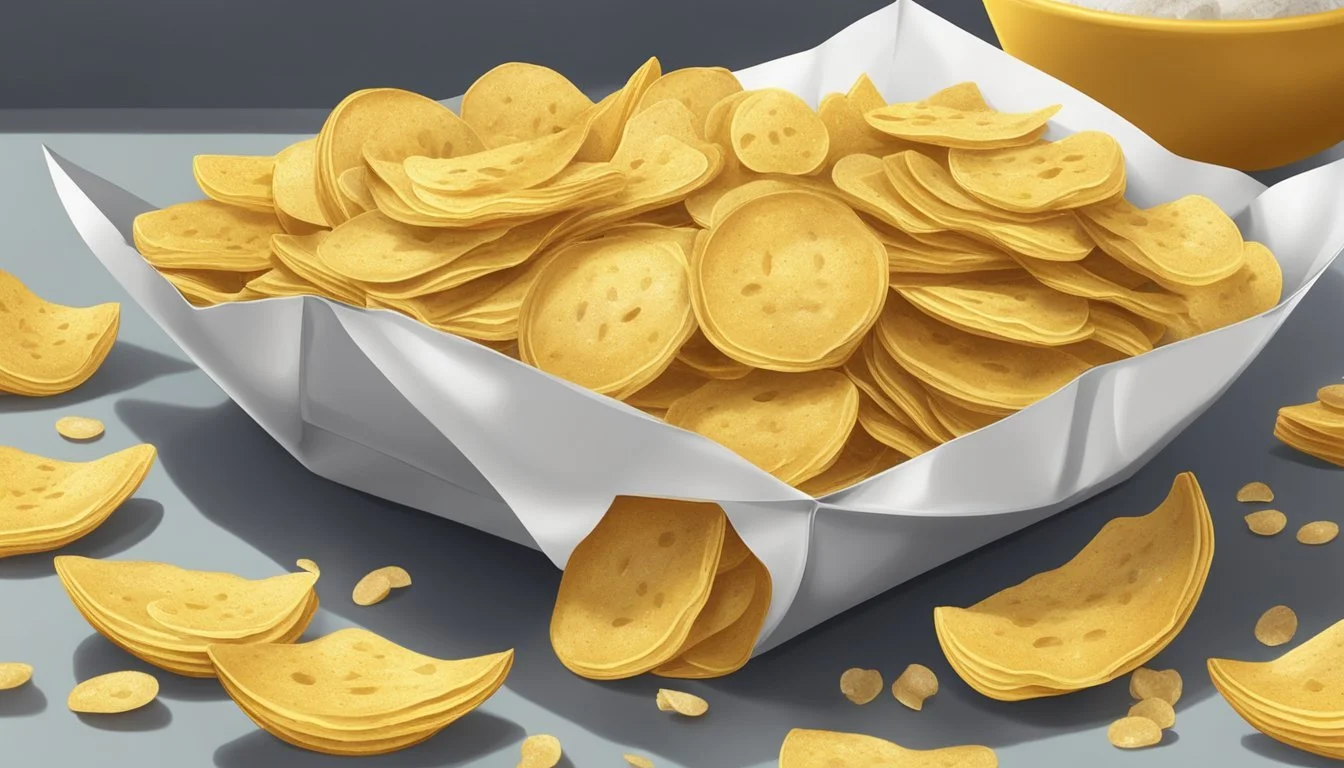Do Plantain Chips Go Bad?
Shelf Life and Storage Tips
Plantain chips, whether made from ripe or unripe plantains, are a popular and delicious snack. Yes, plantain chips can go bad, influenced by factors such as air exposure, moisture, and heat. Proper storage is crucial to maintain their quality, with airtight containers being essential to prevent them from becoming soggy or stale.
Homemade plantain chips, often made with oil and salt, have a shelf life of about four months if no preservatives are added. Store-bought versions can last up to a year if the package remains sealed. After this period, their taste and texture will degrade, making them less enjoyable to eat.
Plantain chips also have notable nutritional values. A typical 28-gram serving contains around 150 calories, 3 grams of fiber, and 2.3 grams of protein. This makes them a slightly healthier alternative to other fried snacks, like potato chips, which are often higher in sodium.
Understanding Plantains
Plantains are a type of starchy fruit that can be consumed at various stages of ripeness. They offer a different nutritional profile compared to bananas and other snack options, providing unique benefits and characteristics.
Characteristics of Plantains
Plantains are larger and tougher than bananas, with thicker skins.
Green plantains are firm and starchy and are often used in savory dishes.
Yellow plantains become sweeter and softer as they ripen, suitable for frying or baking.
Ripe plantains are almost black, very soft, and sweet, ideal for desserts.
They can be boiled, fried, baked, or grilled, making them versatile in culinary uses.
Nutritional Profile
Plantains are rich in carbohydrates, particularly starch, which converts to sugars as they ripen.
They provide significant fiber, aiding digestion.
They are good sources of potassium, magnesium, and vitamin C, contributing to muscle function, bone health, and immune support.
Vitamin A present in plantains supports healthy skin and vision.
They also contain antioxidants which help in reducing oxidative stress.
Comparisons with Other Snacks
When compared to snacks like potato chips, plantain chips have a different nutritional makeup.
Plantain chips have more carbohydrates and less protein than potato chips.
A serving of potato chips generally contains less fat and calories compared to plantain chips.
Due to their high potassium content, plantains can help in maintaining electrolyte balance.
Both snacks have their own merits and can fit into various dietary needs depending on individual goals.
Given their vitamin and mineral content, plantains can offer a nutrient-dense alternative to more common snacks.
Making Plantain Chips at Home
Making plantain chips at home involves selecting the right ingredients, deciding on baking or frying methods, and choosing the appropriate oils and seasonings. These factors ensure that the chips are crispy and flavorful.
Choosing the Right Ingredients
Start with unripe green plantains for savory and crispy chips, whereas ripe yellow ones yield sweeter chips.
Use a sharp knife or mandoline to thinly slice the plantains, ensuring an even cook.
Basic seasonings include salt, but you can also experiment with other flavors like garlic powder or paprika.
Baking versus Frying
Baking and frying are two popular methods. Baking plantain chips involves preheating the oven to 350°F (175°C), arranging slices in a single layer on a baking sheet lined with parchment paper, and baking for around 15-20 minutes, turning halfway through.
For frying, heat vegetable oil (or olive/coconut oil) to 375°F (190°C). Fry the slices in batches, using a slotted spoon to remove and drain them on paper towels once golden and crispy.
Each method has pros and cons. Baking uses less oil, making it a healthier option, while frying results in crunchier chips.
Oils and Flavoring
Selecting the right oil is critical. Common choices include vegetable oil for its neutral flavor, olive oil for a richer taste, and coconut oil for a hint of sweetness.
After cooking, season the chips while still warm. Traditional salt is a staple, but exploring spicy or savory flavors can enhance the taste. Options include adding spices like chili powder, cumin, or even a dash of cinnamon for a sweet twist.
Using an air fryer is another health-conscious approach, combining the benefits of both baking and frying. This method uses minimal oil, producing a crispy texture without excessive greasiness.
By choosing the right ingredients, deciding on baking or frying, and selecting appropriate oils and seasonings, homemade plantain chips can be a delightful and versatile snack.
Health Considerations
Plantain chips offer various health aspects, including nutritional benefits and considerations about calories and fat content. A comparison to potato chips is also provided to give a clearer understanding of their relative health impacts.
Nutritional Benefits
Plantain chips are rich in dietary fiber which aids in digestive health and regularity. They supply vitamin A, crucial for skin health and immune function. Additionally, plantain chips contain antioxidants that help protect cells from damage caused by free radicals. Surprising to some, plantains also offer low sodium levels, beneficial for heart health and maintaining low blood pressure.
Caloric and Fat Content
One standard serving of plantain chips (28 grams) contains about 150 calories. While the calorie count is moderate, they are fairly high in fat, with 7 grams per serving. This fat content represents 11% of the recommended daily value, which might be of concern for those monitoring their fat intake to avoid risks such as obesity and heart disease.
Plantain Chips versus Potato Chips
In comparing plantain chips to potato chips, it is important to note the differences. Plantain chips usually contain higher amounts of dietary fiber and, in some cases, more vitamins. Conversely, potato chips have less carbohydrates and protein content. Potato chips typically contain 25% less carbohydrates per serving when compared to plantain chips, which might make them a better choice for low-carb diets. However, plantain chips may offer more potassium, beneficial for muscle and nerve function.
Both snacks require moderation due to their calorie and fat content, and users should consider their overall diet when choosing either option.
Storage and Shelf Life
Plantain chips, when stored correctly, can maintain their freshness for varying durations. Proper storage is crucial to extending their shelf life and ensuring they stay free from spoilage.
Proper Storage Methods
To preserve plantain chips, they should be stored in an airtight container. Exposure to air can introduce moisture, making them lose their crunchiness. For store-bought chips with preservatives, keeping the original seal intact can extend their shelf life up to a year. Homemade chips, lacking additives, generally last up to four months if stored in a cool, dry place.
Humidity can accelerate spoilage. Storing the chips in a refrigerator is recommended for environments with high humidity. Freezing is also an option, especially for homemade chips, to maintain crispness and prevent bacteria growth.
Identifying Spoilage
Spoiled plantain chips exhibit several noticeable signs. People should first look for any dark spots or mold growth, which indicates the presence of bacteria. A bad smell is another clear indicator; fresh chips should have a neutral or slightly sweet scent.
Texture changes, such as becoming soft or soggy, also signify spoilage. Consuming spoiled chips can lead to food poisoning, making it vital to discard any questionable batches. Regular checks for these signs ensure only fresh chips are consumed.
Maximizing Freshness
Maximizing the freshness of plantain chips involves several proactive steps. Storing them at room temperature in airtight containers reduces moisture exposure. For long-term storage, freezing in vacuum-sealed packages is effective.
Layering chips between paper towels before sealing can absorb excess moisture. If chips become soft, reheating them for a few minutes in a 300°F oven can restore their crispness. Keeping plantain chips away from direct sunlight or heat sources also helps preserve their quality.
Comparative Analysis
Comparing store-bought and homemade plantain chips helps to highlight differences in freshness, health impact, and sustainability. Different preparation methods can influence nutritional values and consumption safety.
Store-Bought versus Homemade
Store-bought plantain chips often contain preservatives and trans fats to extend shelf life and enhance taste. This makes them less fresh than homemade varieties. Homemade plantain chips generally avoid such additives, offering fresher and potentially healthier options.
Nutritional value can vary significantly. Processed foods like store-bought plantain chips frequently feature higher salt and sugar content. In contrast, homemade versions allow for controlled seasoning, providing a more nutritious alternative. Livestrong advocates for minimizing intake of processed snacks, emphasizing homemade as a healthier option.
Healthier Alternatives
Sweet potato chips and Cheez-Its are popular snack substitutes. Sweet potato chips often contain more vitamins A and C, presenting a healthier option compared to both plantain and potato chips.
Health-conscious consumers may prefer store-bought options labeled low in trans fats and preservatives. However, homemade versions of sweet potato chips provide the freshest and most nutritious alternative. People looking to reduce overall snack consumption can consider a variety of other lower-calorie foods.
Environmental and Economic Considerations
Homemade plantain chips reduce packaging waste associated with store-bought options. Making chips at home minimizes environmental impact by avoiding plastic bags and excess production waste.
Economically, homemade plantain chips can be more cost-effective, requiring only a few ingredients and basic kitchen equipment. Store-bought chips involve additional costs associated with packaging, marketing, and brand premiums. Consumers concerned about their ecological footprint and spending might find homemade to be a reasonable choice.
Environmental sustainability aligns well with homemade methods. Using local, fresh produce reduces the carbon footprint compared to purchasing processed, store-bought snacks frequently imported from distant locations.
Confident choices in snack preparation and consumption impact health, budget, and the environment.






